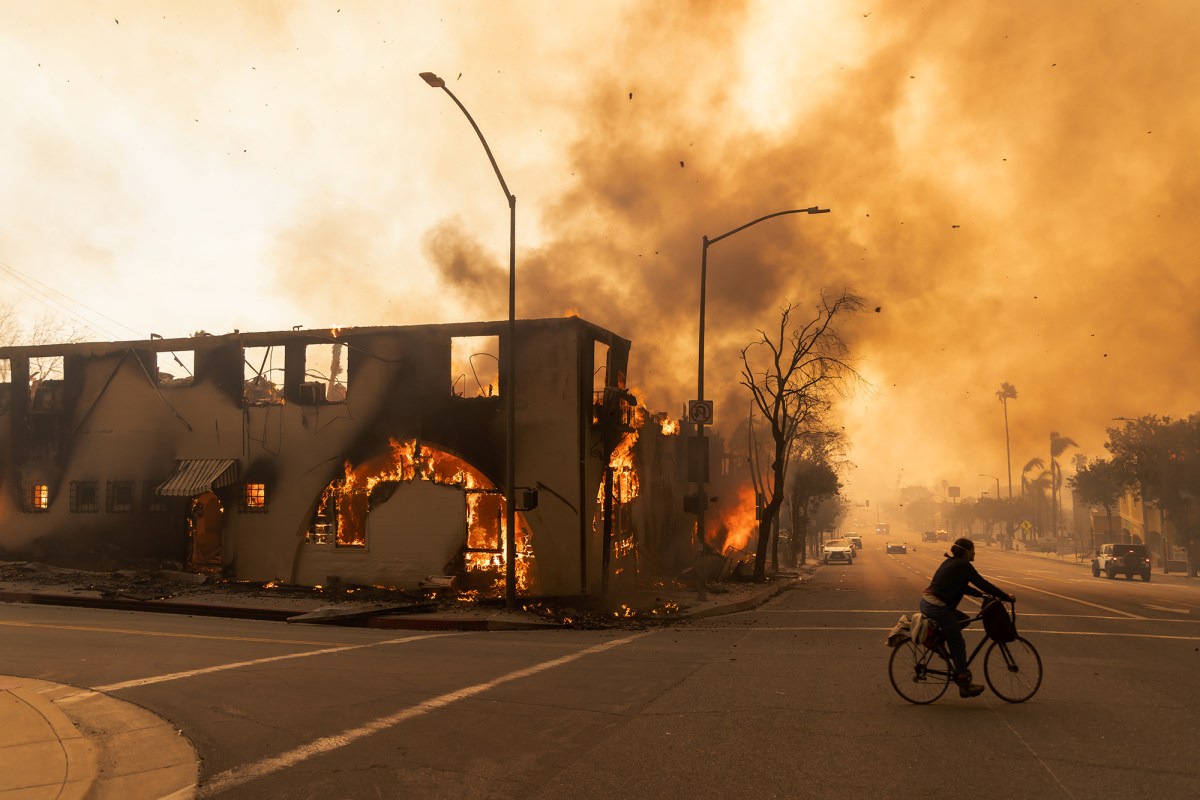In summary
The Eaton Fire’s cause is still under investigation, but Southern California Edison is planning to launch a fund to compensate those affected. Survivors say the utility is trying to “buy us off.”
Welcome to CalMatters, the only nonprofit newsroom devoted solely to covering issues that affect all Californians. Sign up for
WhatMatters
to receive the latest news and commentary on the most important issues in the Golden State.
Southern California Edison this week said it will create a compensation program for those affected by the deadly Eaton Fire in January. Set to launch this fall, the “
Wildfire Recovery Compensation Program
” will pay eligible victims for claims of injury, death and property loss in an effort to curb lawsuits.
Investigators are still determining the fire’s cause, but
Southern California Edison has said
the leading is that its transmission lines started the blaze. The
14,000-acre fire
broke out in Altadena in early January, killing
19 people
. Southern California Edison is facing multiple lawsuits from those who lost loved ones, homes and businesses.
“Even though the details of how the Eaton Fire started are still being evaluated, SCE will offer an expedited process to pay and resolve claims fairly and promptly,” Pedro Pizarro, CEO of the utility’s parent company Edison International, said in a release. “This allows the community to focus more on recovery instead of lengthy, expensive litigation.”
The program will cover losses for physical injury, death, structure losses for both owners and renters, business interruptions, loss of commercial property and damage caused by smoke and ash,
according to its website
.
But no specifics — including who’s eligible, how much money the utility has set aside, whether ratepayers or shareholders will pay and whether participants will be required to forego litigation — have been decided, said spokesperson David Eisenhauer. Those details won’t be available until later this summer, he said.
When CalMatters asked why the utility released some of the news about the compensation program this week instead of waiting until it had the details hammered out, Eisenhauer said the company had been part of the Altadena community for 140 years and paraphrased Pizarro’s statement back to CalMatters.
“Generally with wildfire claims, the first $1 billion is paid by customer-funded insurance,” Eisenhauer said. “After that, we seek reimbursement from the [California] Wildfire Fund.”
That fund is a pool of money the state’s three major investor-owned utilities pay into to cover losses from utility-sparked fires. The
Los Angeles Times reported this week
that the state fund is at risk of being exhausted from claims from the fire.
This isn’t the first time utilities have offered compensation programs to the public following a major fire. Pacific Gas & Electric
ran a similar program
following the Dixie and Mosquito fires in 2021 and 2022. One aspect PG&E made explicit was that to participate, fire survivors would need to drop any lawsuits they had against the utility. Southern California Edison’s Eisenhauer said that requirement is still up in the air for its program.
Some fire survivors and those advocating for them are skeptical. Mike Rothschild and his family lost their Altadena home and nearly everything they owned to the fire. He and several others have filed a lawsuit against Southern California Edison seeking unspecified damages for lost property, emotional distress, medical expenses and punitive damages.
“My first reaction was they are trying to buy us off,” he said. “It felt like they knew they had a serious problem and they were throwing some cash out to hopefully make it go away.”
Rothschild does not plan to apply for the program.
Kiley Grombacher, co-founder of the California Fire Victims Law Center, is representing fire survivors in several lawsuits related to the Eaton Fire. By going through the utility’s claims process instead of letting the legal system run its course, she said, people could be leaving money on the table that they might otherwise be entitled to. If the utility is found responsible, for example, it could be required to pay punitive damages, and Southern California Edison’s program doesn’t currently mention covering long-term health monitoring.
“This is their way to get to people and get these claims cheaper instead of going through the legal system,” she said. “I’d hate to see Edison take advantage of people who have been put through this really catastrophic event and are at the lowest place in their lives.”
As of May 12, the most recent data available, $5.65 billion has been paid out by insurers for about 21,000 residential property insurance claims, a process that
some residents have found fraught
.
Read More on utilities
California launched an AI chatbot for wildfires. It can’t answer one crucial question
PG&E is hiring an executive bodyguard. Combat shooting experience required
Read more from CalMatters
Text
Get breaking news on your phone.
Download
Keep up with the latest via our app.
Sign up
Receive free updates in your inbox.
Nonpartisan, independent California news for all
We’re CalMatters, your nonprofit and nonpartisan news guide.
Our journalists are here to empower you and our mission continues to be essential.
-
We are independent and nonpartisan.
Our trustworthy journalism is free from partisan politics, free from corporate influence and actually free for all Californians. -
We are focused on California issues.
From the environment to homelessness, economy and more, we publish the unfettered truth to keep you informed. -
We hold people in power accountable.
We probe and reveal the actions and inactions of powerful people and institutions, and the consequences that follow.
But we can’t keep doing this without support from readers like you.
Please give what you can today. Every gift helps.






